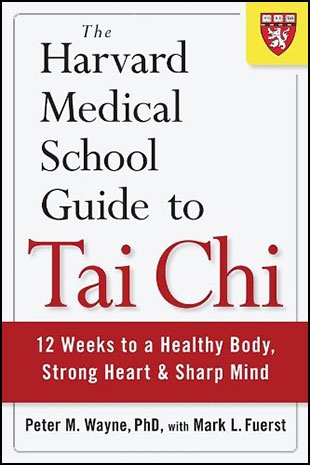Peter M. Wayne is Assistant Professor of Medicine at Harvard Medical School and Director for the Osher Center of Integrative Medicine. He has more than 35 years of training experience in Tai Chi and Qigong and is an internationally known teacher of these practices. Mark L. Fuerst is an award-winning health and medical writer and coauthor of ten books. In this enlightening paperback, East meets West and science combines with the ancient art of Tai Chi, which produces "more vigor and energy, greater flexibility, balance and mobility, and an improved sense of well-being." At the hub of this book is a cogent presentation of ways in which "The Eight Active Ingredients of Tai Chi" can be integrated into personal and professional relationships, work, creativity and sports.
Here are the Eight Active Ingredients of Tai Chi:
1. Awareness (including mindfulness and focused attention)
2. Intention (including belief and expectation)
3. Structural Integration (including dynamic form and function)
4. Active Relaxation
5. Strengthening and Flexibility
6. Natural, Freer Breathing
7. Social Support (including interaction and community)
8. Embodied Spirituality (including philosophy and ritual)
To help us put these principles into practice, Wayne and Fuerst present a simplified program of Tai Chi exercise with more than 50 pictures. In addition, they summarize the research literature on the health benefits of Tai Chi and give readers tips on utilizing this traditional Chinese art form in everyday activities.
We found wise counsel in the chapter on balance and bones. In older people a lack of balance can cause falls, and Tai Chi is very effective in addressing this problem. Some 50 million Americans over 50 have low bone density, and fractures in this group often result in great suffering and medical costs. Tai Chi exercises the four body systems that work together to help seniors avoid falling.
The curious reader will find plenty of fresh material on Tai Chi's possible contributions to alleviating aches and pains, strengthening the heart, deepening breathing, sharpening the mind, and enhancing well-being and sleep quality. This ancient Chinese system of body movement can work wonders to those willing to commit themselves to regular practice.
